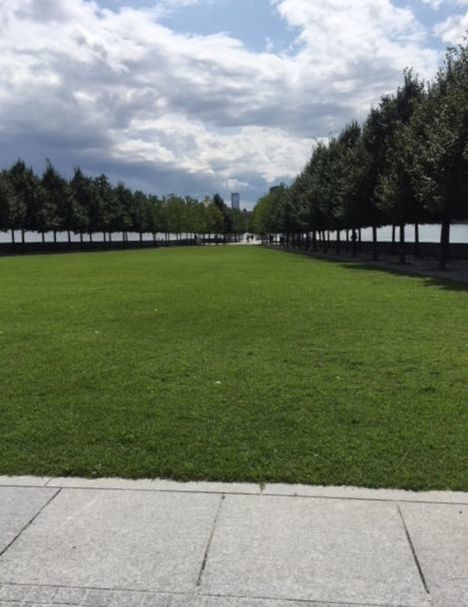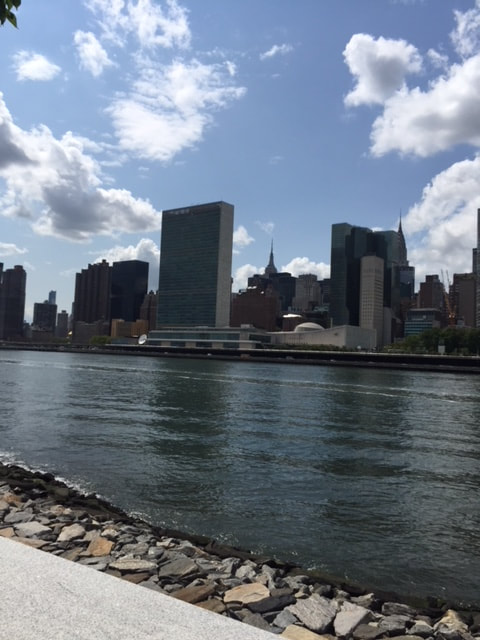|
By Laurie Lewis Franklin D. Roosevelt Four Freedoms Park opened in 2012 at the southern tip of Roosevelt Island, a narrow strip of land in the East River between Manhattan and Queens. The park is situated on a four-acre triangular plot of landfill. Renowned architect Louis I. Kahn envisioned this memorial shortly before his death in 1974. A row of five copper beech trees separates the landmarked ruins of the Smallpox Hospital, designed in 1854 by James Renwick, Jr. (architect of St. Patrick’s Cathedral), from a white granite staircase leading to the FDR memorial. The view from the top of the stairs is spectacular: the Midtown Manhattan skyline to the right, Queens to the left, and a wedge-shaped lawn lined on each side by sixty little-leaf linden trees. The tapering lawn points to the centerpiece of the memorial. A larger-than-life head of Franklin Delano Roosevelt greets the visitor. Enlarged from a bust that sculptor Jo Davidson made of the President in 1933, this bronze head is six feet tall and weighs 1,050 pounds. Granite slabs behind the FDR image contain words from his eighth State of the Union address, known as the Four Freedoms speech. The President spoke of what every place in the world needs: freedom of speech and expression, freedom of worship, freedom from want, and freedom from fear. More granite slabs create walls perpendicular to the stones engraved with the excerpt from the Four Freedoms speech. Architect Kahn called this granite rectangle the “Room.” The Room is open at the south end and on top—perhaps suggesting a world open to possibilities? I have been to the Four Freedoms Park several times. Each time, I have been amazed by the serenity; even on weekends, it is not crowded. The most impressive aspect is the view, especially of Manhattan from a perspective that otherwise can be obtained only from the Queens side of the East River. The United Nations is directly opposite the Room, and iconic New York structures like the Chrysler and Empire State buildings peek out from the background. Yet as magnificent as the views are, the Four Freedoms Park lacks something, in my opinion. Perhaps it is a matter of semantics. To me, a park must be green. Aside from the tree-lined lawn, this is predominantly a white stone place. In a park, the eye should be drawn to its elements—not away to scenery beyond its borders. A park should entice visitors to relax and linger. Little seating is available for this purpose, except for flat granite slabs in the Room; the lawn and shady border lack benches. Perhaps this is why the park has so few visitors compared with more perfect retreats like Central Park and Bryant Park. Even if Roosevelt Island’s Four Freedoms were considered a memorial rather than a park, it falls short of the FDR memorial in Washington, DC. That structure tells multiple stories, with many quotes and statues. The Roosevelt Island tribute to the four-term President is an example, as I see it, of less not being more. To learn the history of Roosevelt Island and how it is eco-friendly, see the September 2018 newsletter.
Comments are closed.
|




